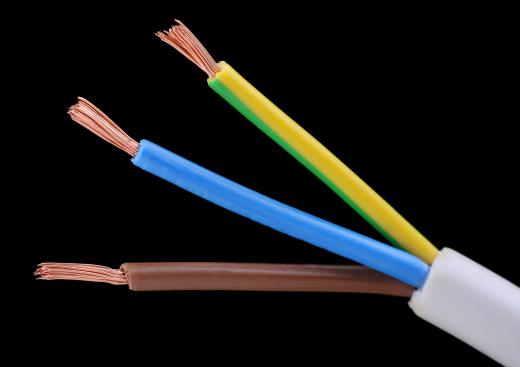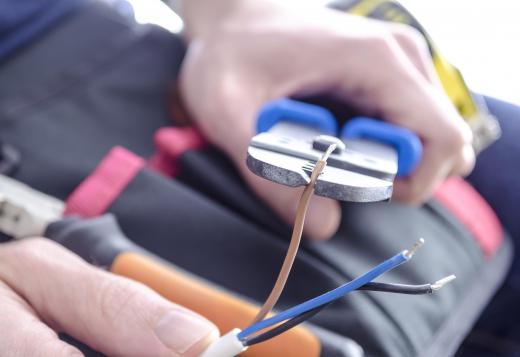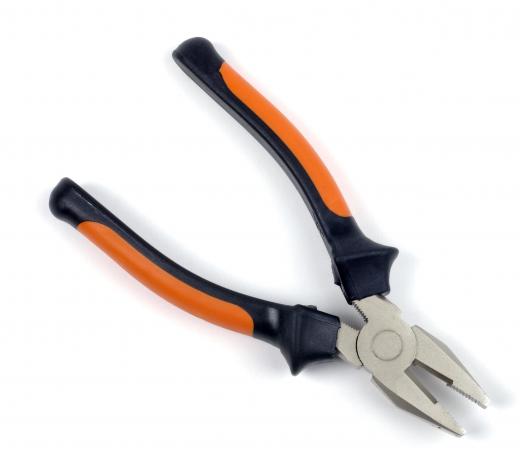When an electrician needs to repair a wire, he or she may use a pair of wire strippers. A tool that resembles a pair of pliers in appearance, wire strippers enable a worker to cut the protective coating off an electrical wire. This must be done before repairing or replacing most wires.
These tools may come in a variety of shapes and sizes. They are primarily made out of steel, and feature serrated teeth for optimal wire stripping. Handles can be curved or straight, and are usually cased in a rubber coating to allow a secure grip. Self-adjusting pairs are also available that quickly accommodate cable thickness when squeezed. Wire strippers are considered an inexpensive purchase for professional electricians.

From the hinge to the handle, different functions are available. The cutter piece is adjacent to the hinge itself. It is used to cut off the length of wire needed, as well as to remove a faulty piece of wire. Moving down the handle, different notches are present to indicate where to use the wire stripper tool for different sizes of wire. This enables plastic coating to be easily stripped off without inflicting damage to the wire .

On the head of the wire stripper, there are different gauges to be used in fastening metal clips or fasteners. These can include straight pieces to join wires together, round-tipped fasteners that fit through bolts, and U-shaped fasteners to connect items in tight areas. There are also interlocking fasteners to be used in quick projects.
There are many different varieties of wires that wire strippers can be used on. These may include electrical wires such as those used in speakers, home wiring systems, or toys like remote control cars. The wires may be made up of any material, from copper to aluminum to fiber optic materials.

To use a pair of wire strippers, first slice the cable coating with a sharp blade or a cable ripper. Bend the coating back and cut off any extra coating with the tool, then bend the loose wires back. Place the wire in the appropriately sized stripping hole and firmly close the tool's handles around the wire, making a clean cut in the coating. Slide the tool forward, pushing the coating off the wire. Then bend the wire into shape, pushing it through the bending hole to finish.

Wire strippers are used by other professionals aside from electricians. They can be utilized in stereo installation, cable and satellite repair, and during general mechanical operations. People may also keep a pair of wire strippers around for various home improvement and electronics projects.

